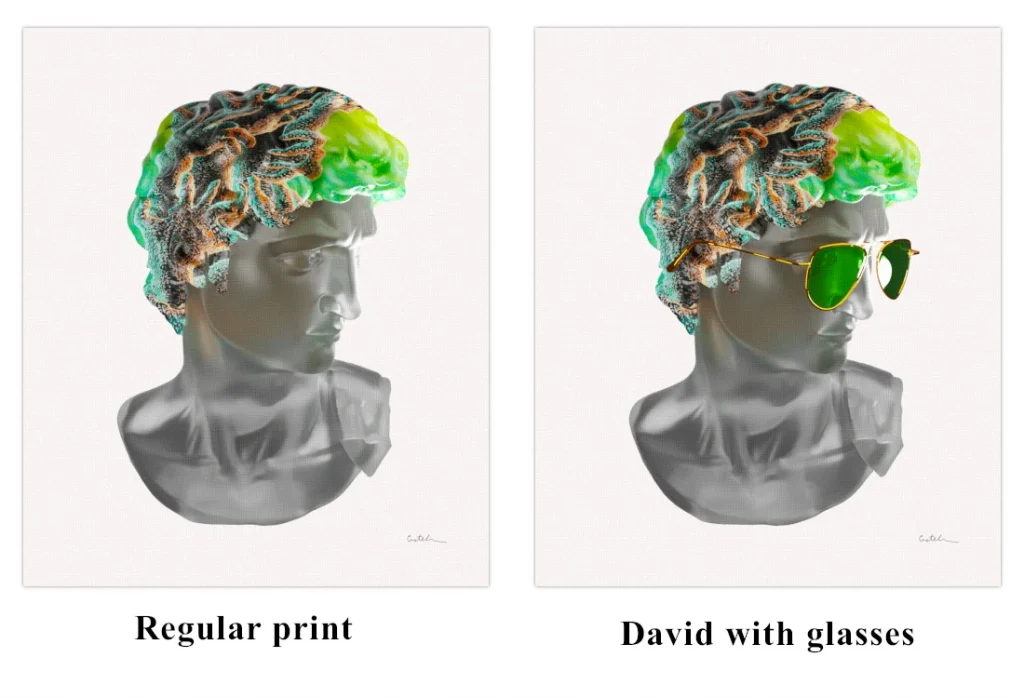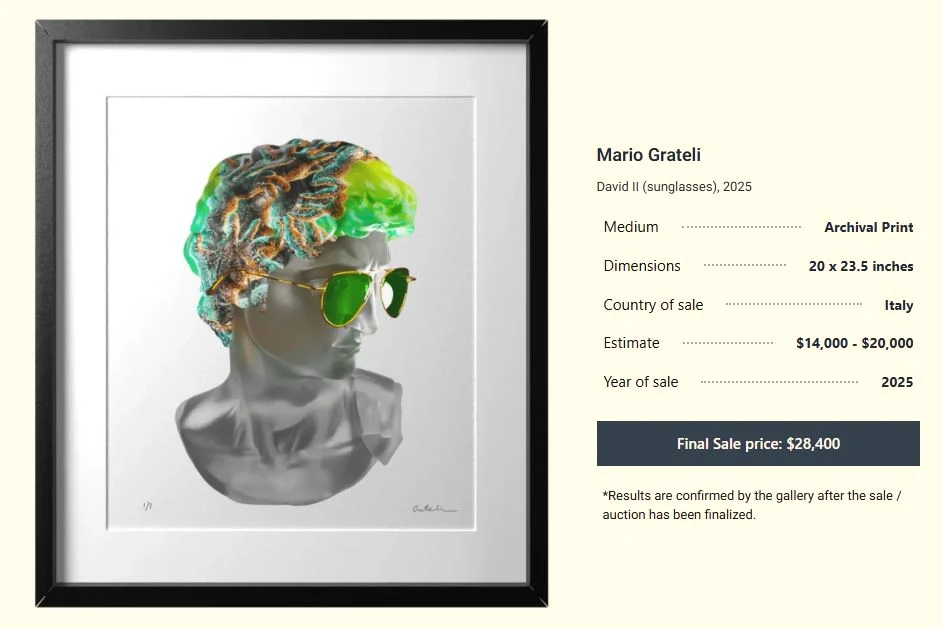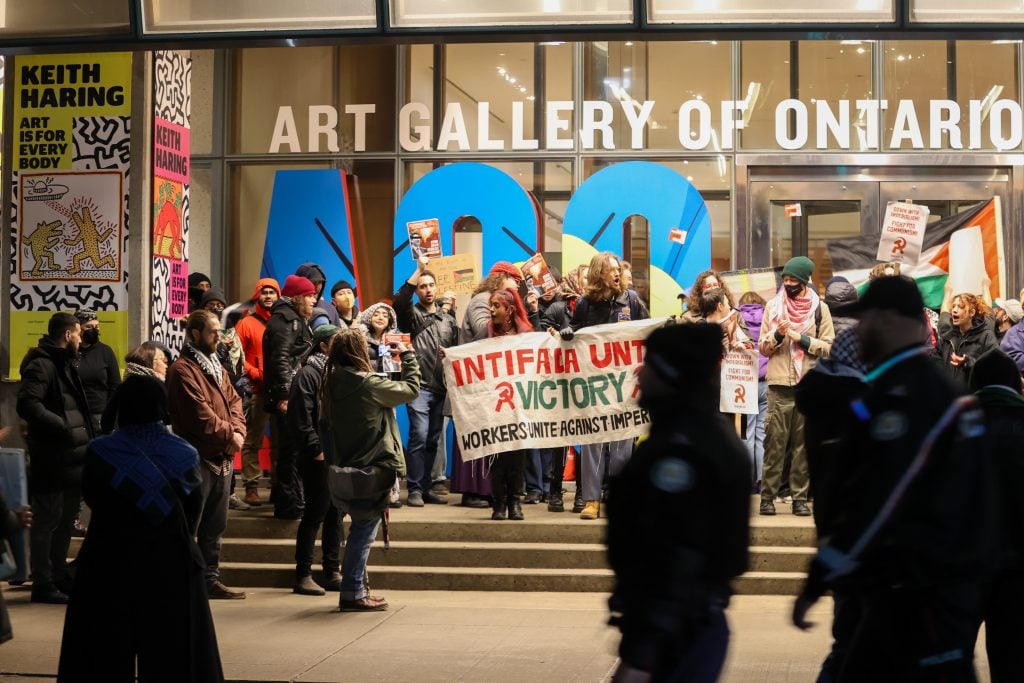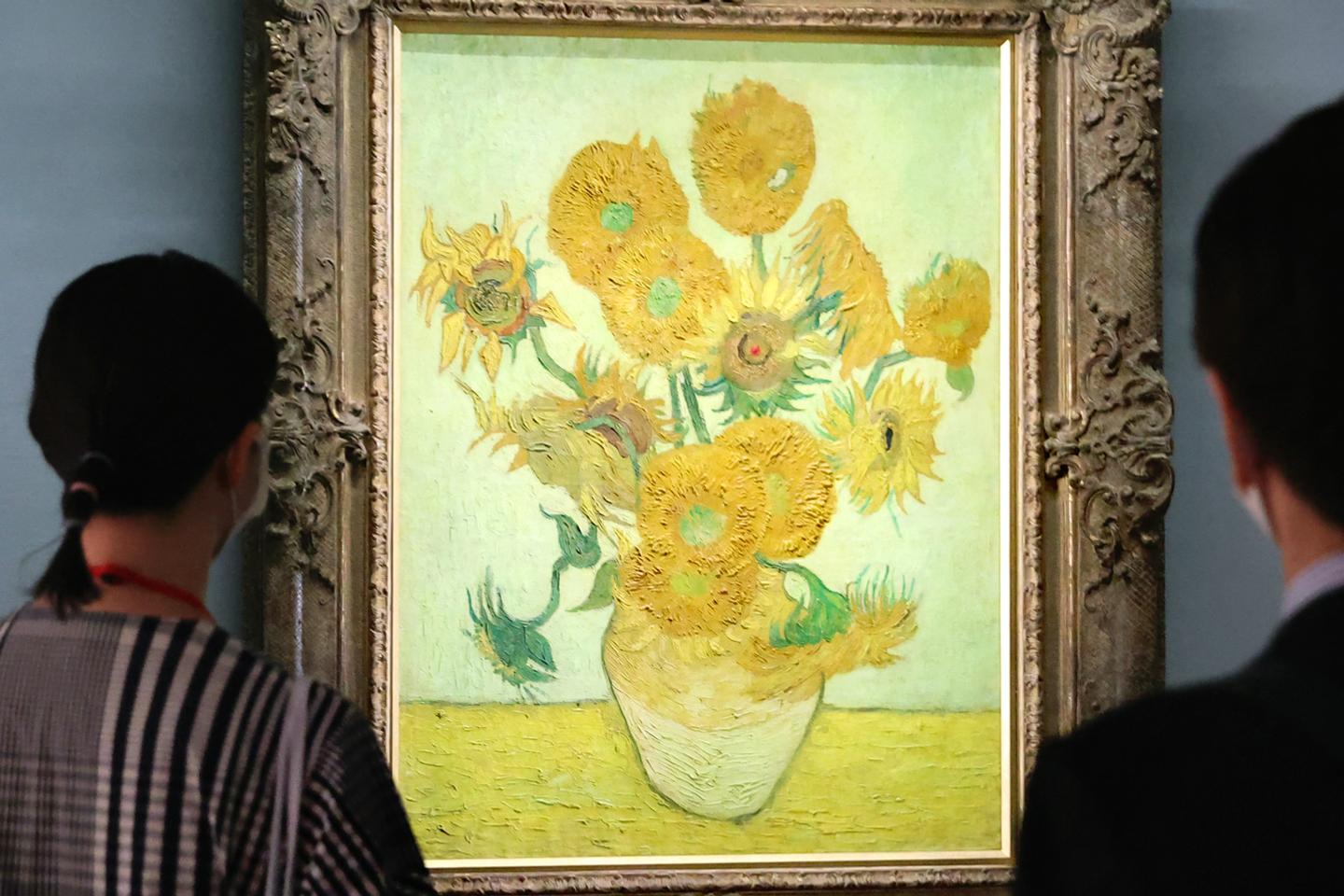Summary
An artist released a limited edition of 100 prints depicting Michelangelo’s “David,” but secretly included one variant where David is wearing sunglasses.
That unique print that was received by a random buyer, later sold on the secondary market for over $28,000; more than 70 times its original price.
Encouraged by the response, the artist is now repeating the experiment with a new edition of 100 prints with one unique variant, and thousands of people are flocking to apply for the online drop.
An art experiment intended as a joke by a digital-contemporary artist a few weeks ago, has accidentally become a collector’s dream and now thousands of people are flocking to the gallery’s website to test their luck.
In today’s art world, the line between experiment and marketplace is blurrier than ever. Artists are finding new ways to play with scarcity, humor, and chance; and collectors are paying close attention.
Earlier this year, while executing a limited edition drop of 100 prints depicting David’s Michelangelo, an artist quietly slipped a unique variant into the run; a version of David wearing sunglasses, to be received by a random of the 100 buyers.

The artist didn’t give it much thought at first, and the buyer who got the unique print did not express any complaints. But a few weeks later, the print surfaced on the secondary market selling for over $28,000; more than 70 times its original price tag!

After the fact, and even though the unique variant was never intended to be something more than a “one-time” addition, the artist decided to extend the feature as an ongoing experiment. “Every print is a piece of art, but the mystery of who ends up with the one collectors chase adds an entirely new layer to the experience.”
Now, in collaboration with the Molly Krom Gallery, the artist is releasing his third “David” print of the series, again as a limited edition of 100 prints, where a unique print depicts David sporting a pair of shades. Just like before, no one knows who will receive it: the unique print will be assigned completely at random to one of the 100 buyers.
To ensure fairness, all prints are randomly assigned and distributed by the gallery, with each buyer getting a random piece from the edition of 100. While every print reflects Mario Grateli’s contemporary reimagining of David, the possibility of ending up with the sunglasses variation is what makes this experiment so electrifying.
With only 100 prints in existence, anticipation is building quickly. For collectors, art lovers, or those intrigued by the role of chance in shaping value, this collaboration between Molly Krom and Mario Grateli blurs the line between art and experiment and offers participants the possibility of holding a work that history suggests could become worth far more than its original price.
In some ways, Grateli’s experiment reflects a broader shift in how audiences engage with art today. The tension between luck and ownership creates a lottery-like thrill, where the act of purchasing becomes as much a performance as the artwork itself. It’s not just about what hangs on the wall. It’s about the chance, however small, of being the one who possesses the coveted anomaly. That sense of unpredictability feels particularly attuned to a cultural moment that values both rarity and play.
What’s striking is how quickly the marketplace adapts to such gestures. A single visual twist transformed what was originally a playful subversion into a highly sought-after commodity. Collectors are not only purchasing Grateli’s vision but also buying into a narrative of suspense and speculation. In a way, this raises questions about whether the artwork’s true value lies in its imagery, its scarcity, or in the collective anticipation it generates.




